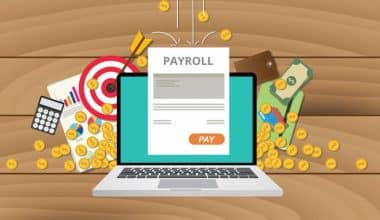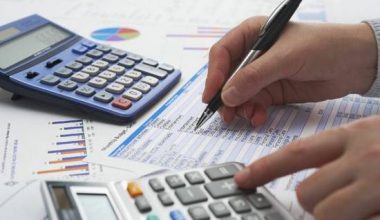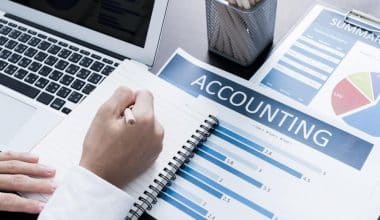Calculating how much money your firm owes in debts and other financial obligations is a good approach to assessing its short-term financial situation. To do so, you must have a complete understanding of your current liabilities. This will allow you to determine whether your organization has the financial resources to meet your numerous obligations. We’ll define current liabilities examples, give instances, and explain how they’re used and documented in this post.
What Are Current Liabilities?
Current liabilities (CL) are short-term debts that a corporation must repay within a year. An operating cycle might sometimes last more than a year. In certain cases, a current liability will be payable within the operational cycle’s term. The balance sheet shows your company’s current liabilities.
CL can be done in a variety of ways, but the most common method is to liquidate current assets such as cash or receivables. Another option to settle present liabilities is to replace them with other liabilities. Understanding your company’s existing assets and liabilities, as well as their relationship, is critical to establishing its financial status. This is because comparing the numbers for both will tell you if your company has the financial resources to pay its debts for the year or operating cycle in question.
Overview
Current liabilities are usually settled with current assets, which are assets that are consumed within a year. Cash and accounts receivables, or money owing by consumers for sales, are examples of current assets. The current assets to CL ratio is a crucial factor in determining a company’s capacity to pay its debts on time.
Accounts payable comprises unpaid supplier invoices and is often one of the largest current liability accounts on a company’s financial statements. Companies aim to time their payment dates such that their receivables are before their payables to suppliers are due.
How Do Current Liabilities Work?
On the right side of a balance sheet, across from the assets, are current liabilities. In most circumstances, you’ll get a list of several categories of CL along with the amount owed for each one. Following that, you’ll see a total sum that includes all CL.
A company’s obligation to pay existing creditors is unavoidable. It must accomplish so by balancing liabilities and current assets. The difference represents the operating capital of the company.
You may get a sense of a company’s financial health by comparing CL against current assets. If the company’s assets are insufficient to satisfy short-term liabilities, it may face financial difficulties before the end of the year.
On the other hand, it’s ideal if the company’s assets are sufficient to meet its present liabilities, with some leftovers. In that case, it will be well-prepared to weather any unforeseen changes in the coming year.
Examples of Current Liabilities
A balance sheet will detail all of a company’s short-term liabilities. They can be classified into a variety of groups, which may alter over time.
#1. Accounts Payable
Accounts payable is the inverse of accounts receivable, which is money due to a business. What the corporation owes to others is accounts payable. When a corporation receives a product or service before paying for it, this grows.
Accounts payable, or “A/P,” are frequently among a company’s highest current obligations. Businesses are always placing orders for new products or making payments to vendors for services or goods.
#2. Accrued Payroll
This line item on the balance sheet represents money owed to employees that have not yet been paid by the company, such as:
- Salaries
- Wages
- Bonuses
- Compensation in other forms
#3. Short-Term and Current Long-Term Debt
“Notes payable” is a term to describe these CLs. They are the most essential components in the balance sheet’s CL area. The payments on a company’s loans that are due in the next 12 months are usually payable.
If, on the other hand, the total value of cash, short-term investments, and accounts receivable exceeds the whole value of notes payable, it may be cause for concern.
Unless the organization is in the business of turning inventory into cash quickly, this could be a symptom of financial fragility.
#4. Other Current Liabilities list
Various other current liabilities will be depending on the company list. They may be together under the heading “other current liabilities” in some circumstances.
You might also want to look at the entries for:
- Dividends payable: The amount of money that the board of directors has approved for future distribution to shareholders.
- Interest payable: The amount of money that must be paid to lenders as interest.
- Income taxes: Money that will have to be paid to the government.
#5. Consumer Deposits
If you’re looking at a bank’s balance sheet, make sure to check the consumer deposits section. If it isn’t with them, it will most likely be under “other current liabilities.”
The amount that clients have put in a bank is called a consumer deposit. This money is more of a liability than an asset. This is because all of the account holders could conceivably withdraw all of their funds at the same time. The bank does not own its money.
Why Do Investors Care About Current Liabilities?
Investors and creditors all have a vested interest in conducting an examination of current liabilities. Before granting credit to a firm, for instance, financial institutions like banks want to ensure that the company is collecting or getting paid for its accounts receivable in a timely manner. On the other hand, it is essential that the company’s payables be paid in a timely manner at all times. The examination of a company’s financial soundness and the management of its current liabilities might benefit from the use of both the current ratio and the quick ratio.
How are Current Liabilities Generated?
When a corporation is operating, it must incur expenses, and sometimes those expenses exceed the available cash and operational resources. Therefore, the solution to this shortage is frequently the credit terms and lending facilities supplied by suppliers and lenders.
If a business has a profitable year, it will owe taxes on that earnings to the government for that year.
Different types of obligations constitute different kinds of current liabilities. Most businesses will have accounts payable if they regularly do business with suppliers that extend credit to the company or if customers have outstanding balances on their accounts with the company. Accrued costs, short-term notes payable, the current due amount of long-term notes payable, and income tax payable are some of the other main types of liabilities. All of these play a role in forecasting and pricing.
Is Bank a Current Asset?
Depending on the length of time the funds have been kept in the bank account, the funds may or may not be considered current assets. Any asset that is anticipated to produce an economic benefit for the current year or within the next year is considered to be a current asset. Current assets can include money that has been sitting in bank accounts for a period of time that is shorter than a year.
Is a Loan a Liability or an Asset?
Loans, accounts payable, mortgages, deferred revenues, bonds, warranties, and accrued expenses are all examples of liabilities, which are recorded on the right side of the balance sheet. Assets and liabilities can be compared to one another. Items that you owe or have borrowed are referred to as liabilities, whereas things that you own or are owed are referred to as assets.
What is Amount of Current Liabilities?
The current portions of long-term debts are the amounts of long-term loans that an organization is required to repay within a period of one year from the date that the balance sheet was created. For instance, a company might owe $20,000 on a loan that’s worth $150,000 and the payment is due in exactly one year. A current liability equal to $20,000 is represented here.
Examples of Current Liabilities
Depending on the company, CL can take a variety of forms. Here is some current liabilities examples list that your business may face:
#1. Accounts Payable
Accounts payable refers to money owing to a business for goods or services it has already received. More so, accounts payable is the most prevalent sort of current obligation by businesses because they require supplies and products on a regular basis.
#2. Accrued Expenses
Accrued expenses are funds that have accumulated over time but have not yet been repaid. These expenses are considered a current liability because they will be paid back within the year.
#3. Notes Payable or Bank Loans
The amount of money a firm owes in loans within a year is its CL. To stay in good financial standing, businesses should have a cash balance that is greater than their notes payable.
#4. Income Taxes Payable
Income tax is the amount of money you owe the government but have yet to pay. Your income taxes are a current liability because they will be within a year.
#5. Wages
Wages are the wages that you earn as an employee but have yet to be paid. Also, wages are a current or short-term burden because your employer will pay you within the year.
How Companies Use Current Liabilities
Current liabilities are to assess your business’s ability to repay short-term debts and other obligations examples are listed below. Your company is to be in good short-term financial health if it has more current assets than CL. When it comes to current obligations, there are three ratios to bear in mind. They are as follows:
#1. Current Ratio
The current ratio is by dividing current assets by CL. More so, various analysts and creditors will be able to assess how well your organization is doing financially and how balanced your balance sheet is by using the current ratio.
#2. Quick Ratio
The quick ratio is calculated by dividing current assets minus inventory by current liabilities. The fast ratio examines if your company can meet its short-term financial obligations with short-term assets. Quick assets are current assets that can be changed into cash rapidly. They’re also a company with highly liquid assets. The fast ratio and the current ratio both assist in determining whether or not your firm will be able to repay its financial loans or commitments, as well as providing insight into how to manage your CL.
#3. Cash Ratio
The cash ratio is calculated by dividing cash and cash equivalents by CL. This ratio assesses your company’s ability to repay short-term debt using cash or cash equivalents alone. The cash-asset ratio is another name for it.
You can use these ratios to see if your organization has the financial resources to pay off any outstanding loans or obligations.
What is the Current Ratio?
The current ratio, which evaluates a company’s capacity to fulfill its short-term financial bills or obligations, is frequently used by both financial analysts and creditors. The ratio, which is determined by dividing a company’s current assets by its current liabilities, reveals how well a business maintains its balance sheet in order to pay off its payables and obligations that are due in the near future. Investors and analysts can use it to determine whether or not a firm has sufficient current assets on its balance sheet to meet or pay off its current debt and other payables.
What are Current Assets?
The term “current assets” refers to all of a company’s assets that are anticipated to be easily sold, consumed, utilized, or exhausted within the span of one year as a result of the company’s typical business operations. On a company’s balance statement, current assets comprise cash, cash equivalents, accounts receivable, stock inventory, marketable securities, prepaid obligations, and other liquid assets. Cash and cash equivalents are listed first. Other liquid assets follow. In most cases, current liabilities are settled using a company’s current assets.
How to Record Current Liabilities Examples
You’ll need to precisely account for and document all of your present liabilities in order to understand your company’s financial situation. When tracking your company’s existing liabilities, follow these steps:
#1. Determine the Type of Transaction
You’ll need to precisely account for and document all of your present liabilities in order to understand your company’s financial situation. When tracking your company’s existing liabilities, follow these steps:
#2. Make Sure You’re Tracking Current Liabilities and Not Long-Term Liabilities
On your company’s balance sheet, both current and long-term liabilities will be, so make sure you put them in the right section. Others will be able to access the right information on your company’s balance sheet more effectively as a result of this. Current liabilities are debts or financial obligations that are due to be within a year. Because the hotel stay will be the following month, the $5,000 would be a current liability in the scenario above.
#3. Disclose Current Liabilities
After you’ve figured out all of your company’s current liabilities, put them on the balance sheet. Your current liabilities will be with accounts payable and notes due at the top of the list because they are the most prevalent types of CL.
#4. Calculate Total Current Liabilities
After you’ve listed all of your current liabilities examples, add them all together to get your total current liabilities. Let’s imagine your hotel owes $10,000 in notes payable, $150,000 in accounts payable, and $5,000 in unpaid revenue from the above-mentioned hotel reservations. To calculate your total current liabilities on the list, add these figures together. Your hotel’s total CL would be $165,000 in this situation. If you want a total liability, add the long-term liabilities to this number and record it as total liabilities on your balance sheet.
FAQs
What are current liabilities called?
Debts or obligations that must be paid within a year are referred to as current liabilities, sometimes known as short-term liabilities.
What does Net current liabilities mean?
The difference between the current assets of the business and the current assumed liabilities of the business computed in line with GAAP and consistently applied by the company in the financial statements is referred to as the net current liabilities list.
Why are current liabilities important?
Knowing your existing liabilities is essential for budgeting and calculating critical financial ratios.






